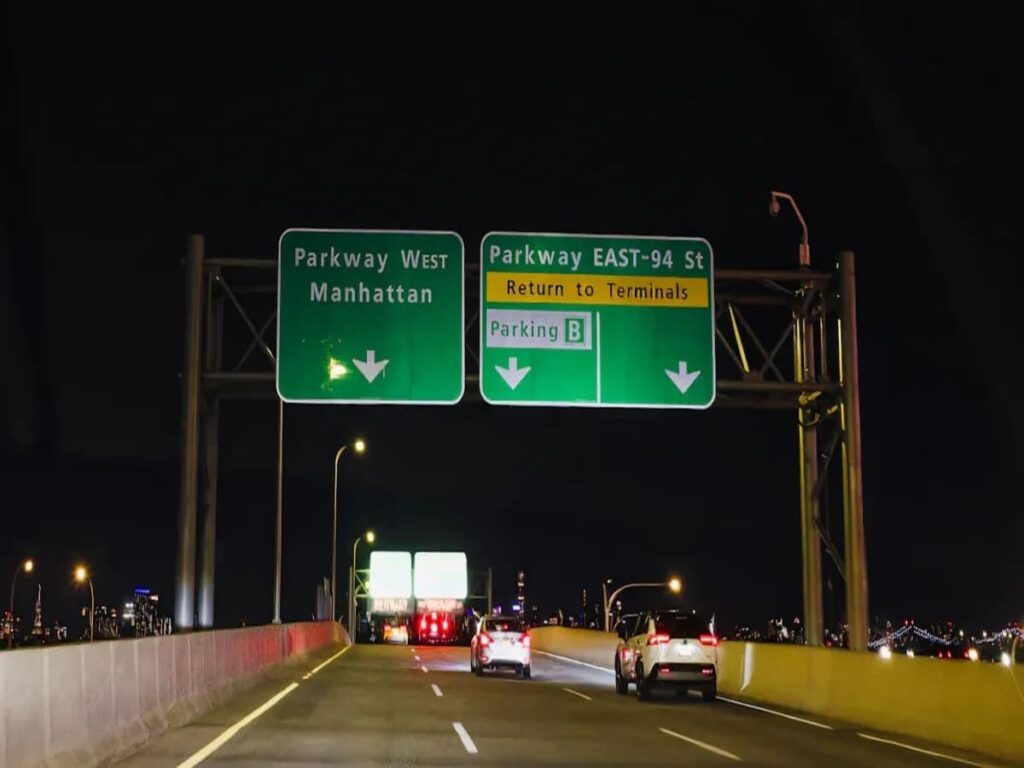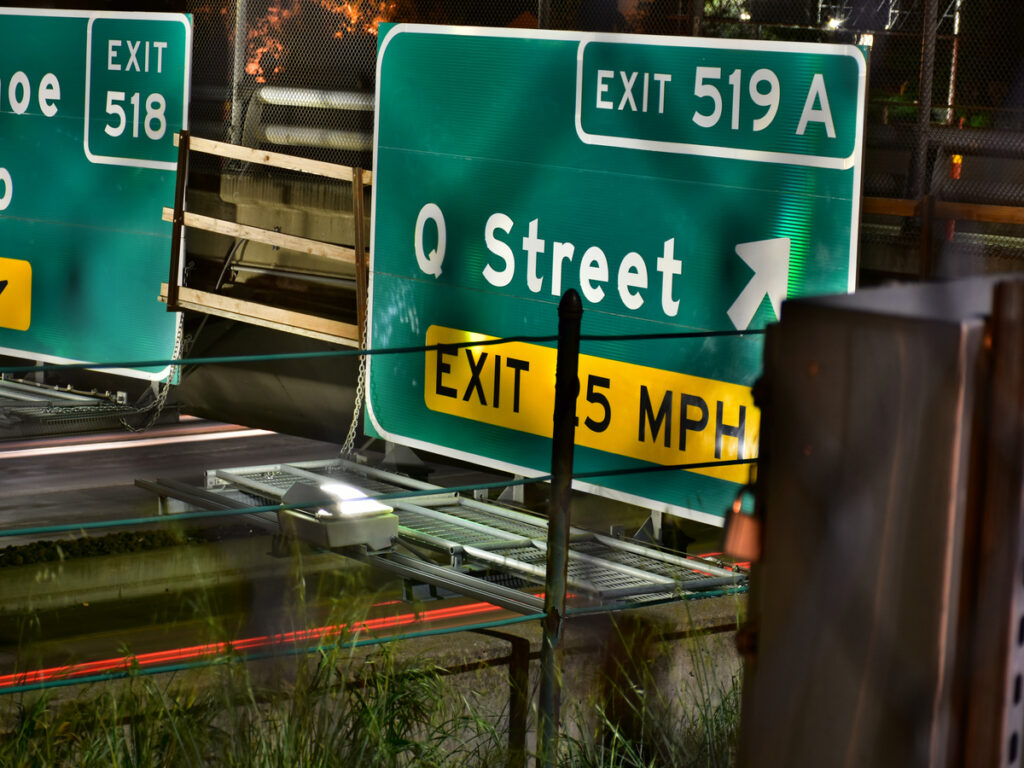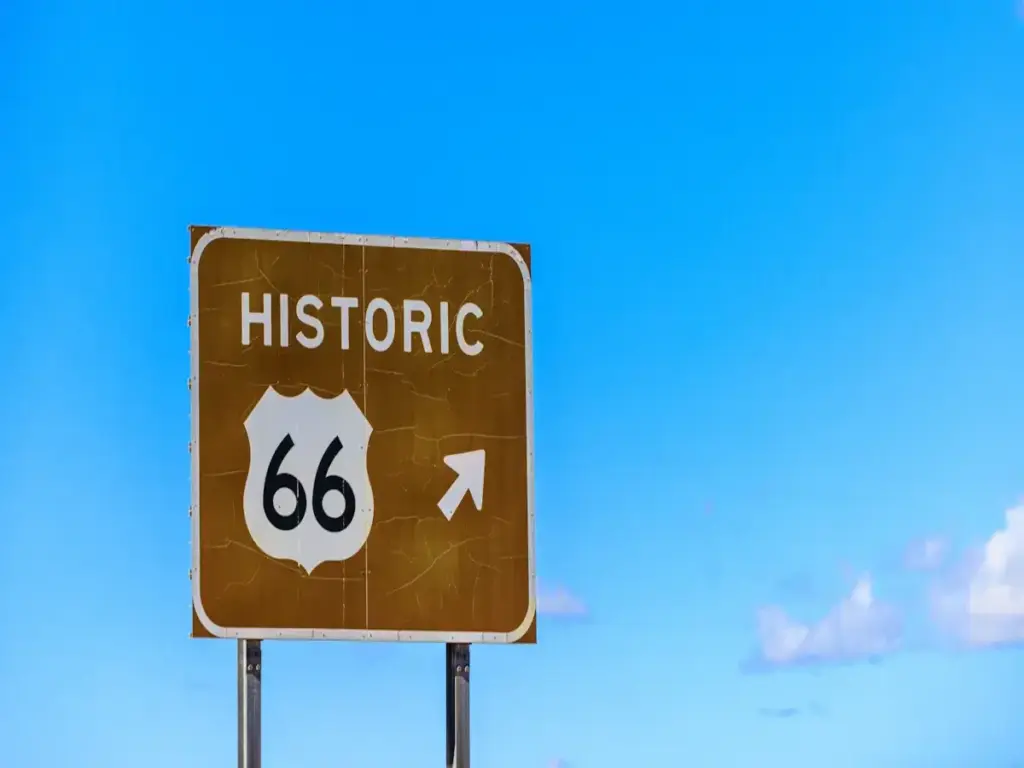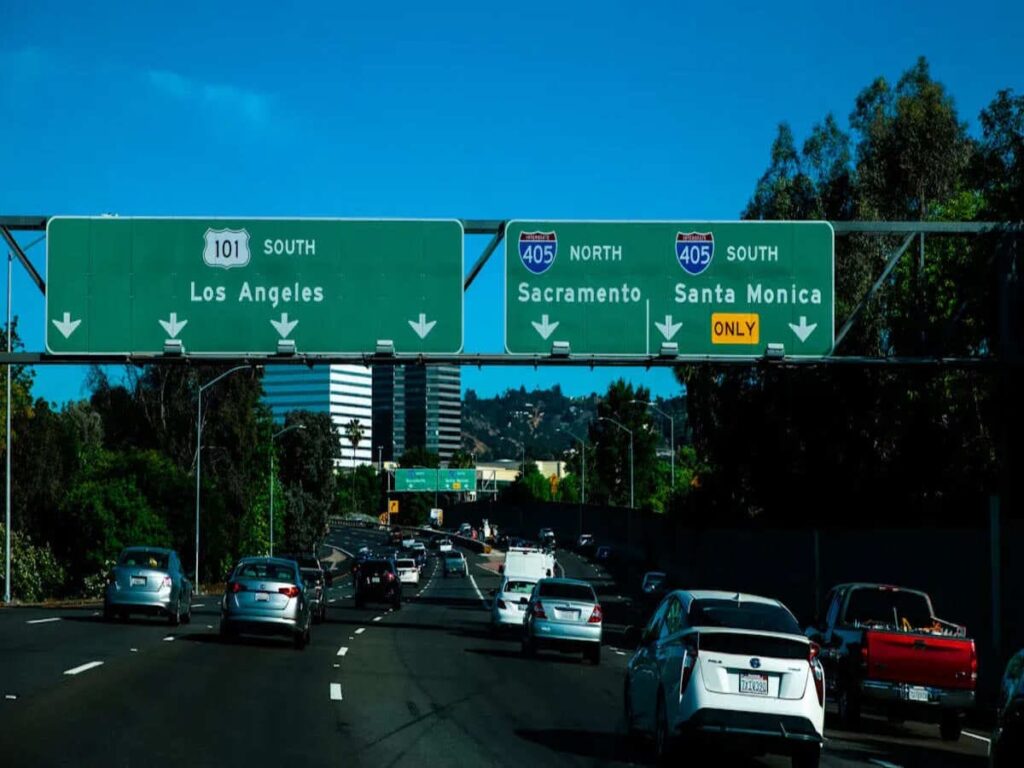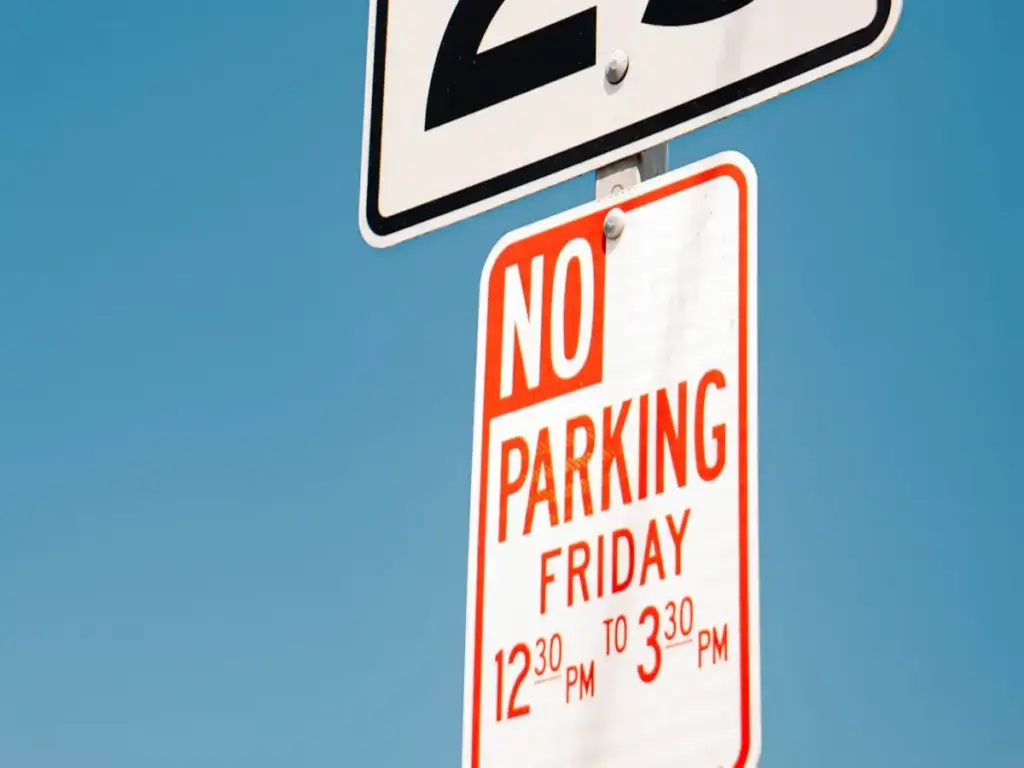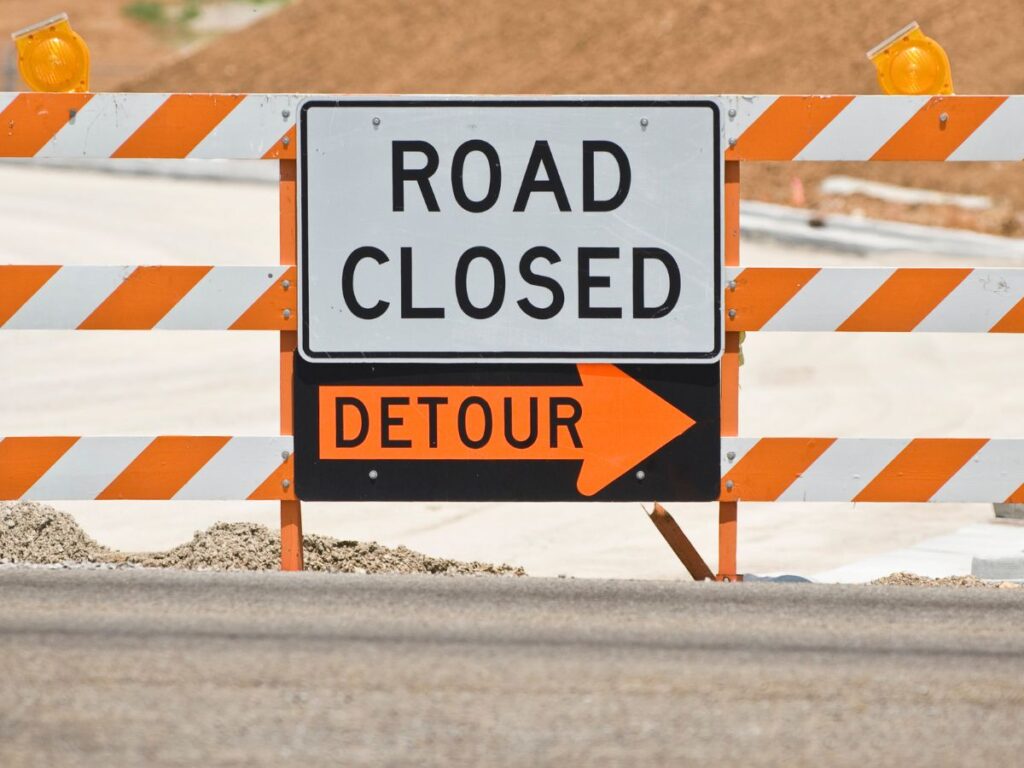
Na Austrália, o tamanho dos sinais de trânsito segue regras nacionais rígidas chamadas AS 1742. Cada sinalização deve ter certas medidas para seu tipo e área da estrada. O tamanho dos sinais de trânsito afeta a forma como os motoristas percebem os sinais e como os tribunais os utilizam. Grupos estaduais e locais podem criar mais regras para manter as coisas iguais em lugares diferentes.
OPTRAFFIC fabrica Sinais de trânsito para venda que cumprem integralmente com AS 1742 padrões, ajudando conselhos e empreiteiros a atender aos requisitos legais e de segurança em todos os tipos de estradas.
Importância do tamanho dos sinais de trânsito
Visibilidade e segurança
O tamanho de um sinal de trânsito é muito importante. Ajuda os motoristas a ver e compreender as instruções de trânsito rapidamente. Sinais maiores são mais fáceis de observar, especialmente quando as estradas estão movimentadas ou confusas. Estudos mostram que o tamanho e a colocação corretos dos sinais ajudam os motoristas a fazer escolhas mais seguras. Por exemplo, em 2015, um estudo analisou sinais de alinhamento em divisa. Descobriu que maior, sinalização bem feita ajudou os motoristas a lidar melhor com as curvas e reduziu os riscos de acidentes. A Organização Mundial da Saúde afirma que a sinalização rodoviária pode reduzir o risco de acidentes em até 30%. O Instituto de Seguros para Segurança Rodoviária viu um 40% queda nas colisões traseiras depois que novos sinais de parada foram colocados. Estes factos mostram que o tamanho dos sinais está intimamente ligado à segurança rodoviária.
Requisitos legais
A lei australiana tem regras rígidas sobre o tamanho dos sinais de trânsito. Se um sinal for muito pequeno, pode não ser legal. Os tribunais podem cancelar multas se uma placa for difícil de ler ou muito pequena. Pesquisa por T. Ben-Bassat e outros mostram que o tamanho e o design corretos dos sinais ajudam os condutores a compreender os sinais. Isso é importante para que a lei funcione. As autoridades rodoviárias devem seguir as COMO 1742 regras então todo sinal é legal e pode ser aplicado.
Fatores Ambientais
As condições climáticas e da estrada alteram a forma como os motoristas veem os sinais. Velocidade, luz, e o formato da estrada é importante. Em estradas rápidas, os motoristas precisam de placas maiores para lê-los de longe. Com pouca luz ou em estradas sinuosas, sinais maiores ajudam os motoristas a ver as instruções mais cedo. Um estudo de campo descobriu que as marcações rodoviárias em tamanho real ajudaram os jovens condutores a identificar sinais mais distantes. Linhas de borda mais largas também fizeram com que as taxas de acidentes caíssem em até 37.7%.
Padrões de refletividade
A refletividade também é importante para ver sinais. As regras australianas dizem que placas maiores devem usar materiais reflexivos melhores, como em AS/NZS 1906.1. Tornar as marcações rodoviárias mais reflectoras levou a 6% menos acidentes noturnos. Isto prova que tanto o tamanho dos sinais como a refletividade ajudam a manter as estradas seguras, especialmente quando está escuro.
COMO 1742 Visão geral
COMO 1742 dá as principais regras para sinalização de trânsito na Austrália. Diz quão grande, que forma, e onde colocar cada sinal. Autoridades rodoviárias usam AS 1742.2 para sinais regulatórios. Eles usam AS 1742.3 para sinais de alerta. COMO 1742.5 é para sinais de guia. Esses documentos possuem tabelas de tamanhos para cada tipo de sinal. Os links padrão sinalizam o tamanho da facilidade de visualização. Isso ajuda os motoristas a ler os sinais de forma rápida e clara. COMO 1742 define ângulos visuais mínimos para peças de sinalização. Os títulos principais precisam de pelo menos 0.50 graus. As peças móveis precisam 0.33 graus. Esses ângulos mostram o tamanho que um sinal deve ter. Os motoristas devem ver os sinais a uma distância segura. A norma diz que os sinais devem ser verificados com frequência. Registros devem ser mantidos para garantir que os sinais funcionem bem.
Observação: Usando como 1742 torna as estradas mais seguras. Ajuda os motoristas a verem melhor os sinais à noite ou nas curvas.
Códigos de série de tamanho
Os sinais de trânsito australianos usam códigos de série de tamanhos para estradas diferentes. Os códigos vão da Série A, qual é o menor, para a Série E, qual é o maior. Os sinais da Série A são normalmente usados para ruas locais tranquilas ou estradas privadas, onde o tráfego é mínimo e as necessidades de visibilidade são menores. Em contraste, As séries B e C são adequadas para a maioria das estradas urbanas, onde o fluxo de tráfego moderado requer sinais mais claros e um pouco maiores. Enquanto isso, As séries D e E são projetadas para rodovias e estradas de alta velocidade, onde a visibilidade máxima e o reconhecimento rápido são essenciais para a segurança do motorista. Cada código corresponde a um conjunto de tamanhos de sinal em milímetros. Este sistema ajuda a escolher a sinalização certa para cada lugar. Ele equilibra a facilidade de visualização dos sinais com espaço e custo.
- Série A.: Ruas locais, velocidades baixas
- Série B: Estradas urbanas, velocidades moderadas
- Série c: Estradas principais, velocidades mais altas
- Série d: Rodovias rurais, altas velocidades
- Série E: Rodovias, Via expressa, ou situações especiais
Dimensões métricas
Todos os tamanhos de sinalização na Austrália usam o sistema métrico. As medidas estão em milímetros para maior precisão. Por exemplo, um Placa de parada em uma cidade é 750 mm de largura. Em uma estrada rural, isso é 900 mm de largura. O uso de unidades métricas ajuda todos a seguir as regras. Cada sinal deve corresponder ao AS 1742 tabelas de tamanhos. Isso garante que todos os sinais, grande ou pequeno, são fáceis de ver e seguros.
Formas de sinal
As regras australianas dizem qual deve ser o formato de cada sinal. Formas comuns são retângulos, quadrados, octógonos, e triângulos. Cada forma significa algo diferente. Os sinais de STOP são octógonos. Os sinais de GIVE WAY são triângulos. Retângulos fornecem informações ou instruções. A forma e o tamanho ajudam os motoristas a saber rapidamente o tipo de sinal. Isso funciona mesmo se o tempo estiver ruim ou a placa estiver longe. O sistema ajuda os motoristas a fazer escolhas rápidas e mantém as estradas mais seguras.
Dica: Verifique sempre o código da série de formato e tamanho antes de colocar novos sinais. Isso garante que as placas sigam as regras australianas.
Tamanho do sinal de trânsito por tipo
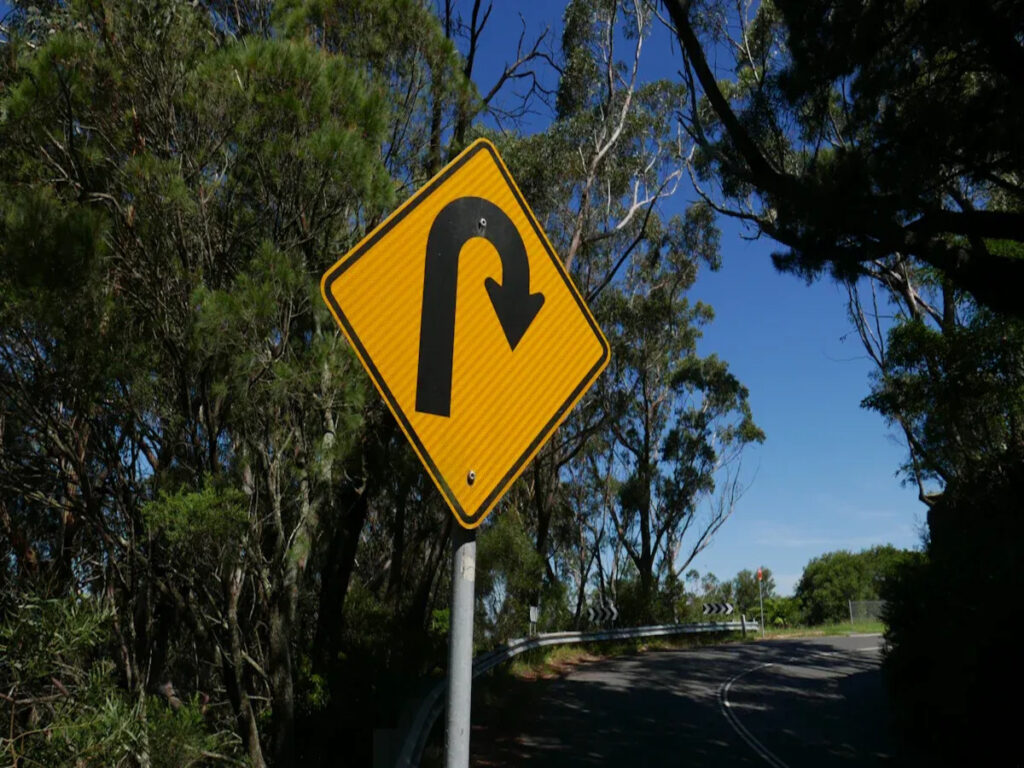
Sinais regulatórios
Sinais regulatórios controlam o comportamento do motorista. Esses sinais incluem STOP, CEDER, e Sinais de LIMITE DE VELOCIDADE. Os padrões australianos estabelecem tamanhos mínimos rigorosos para cada tipo. Por exemplo, um sinal de STOP em uma área urbana mede 750 mm de outro lado. Em estradas rurais, o mesmo sinal aumenta para 900 milímetros. O formato octogonal ajuda os motoristas a reconhecerem a placa rapidamente, mesmo à distância. Os sinais regulamentares costumam usar pictogramas claros para mostrar as regras. Esses pictogramas devem permanecer grandes e fáceis de ver. O tamanho do sinal garante que tanto o texto como os pictogramas sejam visíveis à distância necessária. As alturas das letras nos sinais regulatórios seguem o AS 1742 diretrizes. Isso ajuda os motoristas a ler a mensagem sem confusão. As autoridades rodoviárias verificam estes sinais frequentemente para se certificarem de que cumprem os requisitos legais..
Observação: Os sinais regulamentares devem sempre usar o tamanho e formato corretos. Dimensionamento incorreto pode tornar uma sinalização inexequível em tribunal.
Sinais de aviso
Sinais de alerta alertam os motoristas sobre perigos à frente. Esses sinais usam cores brilhantes e pictogramas em negrito. O tamanho dos sinais de alerta muda com base na velocidade da estrada. Em uma rua local, um sinal de alerta de curva pode medir 750 milímetros. Em uma rodovia, o mesmo sinal poderia alcançar 1200 milímetros. Sinais maiores dão aos motoristas mais tempo para reagir em velocidades mais altas. Os pictogramas nos sinais de alerta devem ser claros e simples. Isso ajuda os motoristas a entender o aviso rapidamente. Os padrões exigem que os pictogramas permaneçam do mesmo tamanho, mesmo quando o sinal cresce. Isso mantém a mensagem clara em todas as condições. Os sinais de alerta geralmente usam fundos amarelos para se destacarem à luz do dia e à noite.
- Sinais de alerta comuns:
- Curva à frente
- Passagem de pedestres
- Travessia de animais
Sinais Guia
Sinais de orientação ajudam os motoristas a encontrar o caminho. Esses sinais aparecem nas estradas principais, rodovias, e vias expressas. Os sinais-guia são o maior tipo de sinalização rodoviária na Austrália. Em uma rodovia, um sinal guia pode medir 2400 mm de largura. Grandes sinais de guia usam texto e pictogramas para mostrar as direções, saídas, e distâncias. O tamanho desses sinais permite que os motoristas os leiam de longe. Os pictogramas nos sinais de orientação devem ser fáceis de reconhecer. Eles mostram símbolos para aeroportos, hospitais, ou áreas de descanso. As normas estabelecem tamanhos mínimos tanto para o sinal como para os pictogramas. Isso garante que os motoristas possam seguir as instruções com segurança, mesmo em alta velocidade.
Dica: Ao instalar sinais-guia, verifique sempre a tabela de tamanhos no AS 1742.5. Isso garante que a sinalização corresponda ao tipo de estrada e à zona de velocidade.
Critérios de legibilidade
Todo tipo de sinal deve atender a critérios rígidos de legibilidade. Os padrões estabelecem regras para alturas de letras, tamanho do pictograma, e espaçamento. Os motoristas devem ser capazes de ler a placa a uma distância segura. O cone de visão descreve a área onde o motorista pode ver claramente a placa. Sinais e pictogramas maiores ajudam a manter a mensagem clara, mesmo que o motorista não esteja olhando diretamente para a placa. Boa legibilidade reduz erros e ajuda a prevenir acidentes. As autoridades rodoviárias usam estes critérios para escolher o tamanho certo dos sinais de trânsito para cada local.
| Tipo de sinal | Tamanho típico (milímetros) | Uso de pictograma | Alturas das letras (milímetros) |
|---|---|---|---|
| Regulatório | 750–900 | Sim | 100–150 |
| Aviso | 750–1200 | Sim | 100–150 |
| Guia | 1200–2400+ | Sim | 150–250 |
Classes de tamanho de zona de velocidade
Zonas de baixa velocidade
Zonas de baixa velocidade, como ruas residenciais ou áreas escolares, exigem sinais menores. As sinalizações da série A ou B se adaptam a esses ambientes. Esses sinais geralmente medem entre 600 mm e 750 milímetros. Os motoristas se movem lentamente, para que possam ler sinais menores sem dificuldade. O padrão australiano como 1742 garante que mesmo os menores sinais permaneçam claros e fáceis de ler. Em zonas escolares, as autoridades costumam usar materiais de alta visibilidade e cores fluorescentes para atrair a atenção. Um estudo de campo em um 60 zona km/h, com uma redução da zona escolar para 40 km/h, mostraram que sinais bem posicionados e sinais de mensagens variáveis ajudaram a reduzir o excesso de velocidade. O estudo seguiu diretrizes de legibilidade e posicionamento, comprovando que o tamanho e o design corretos da sinalização melhoram a segurança.
Zonas de média velocidade
As zonas de velocidade média incluem estradas principais e ruas suburbanas, onde os veículos circulam entre 60 km/h e 80 km/h. As sinalizações nessas áreas usam tamanhos da Série C ou D, que vão desde 900 mm para 1200 milímetros. Sinais maiores dão aos motoristas mais tempo para ver e reagir. A fonte e o design seguem o AS 1744 padrão, que corresponde às necessidades dessas velocidades. A sinalização deve permanecer visível em diferentes condições climáticas e de iluminação. Estudos de design mostram que esses padrões ajudam os motoristas a ler os sinais rapidamente, mesmo em ambientes movimentados ou em mudança.
Zonas de alta velocidade
Zonas de alta velocidade, como rodovias e vias expressas, exija os maiores sinais. Sinais da série E ou maiores são comuns, muitas vezes medindo 1200 mm ou mais. Os motoristas precisam identificar e entender os sinais de longa distância. Os padrões exigem alta refletividade e letras em negrito. Quadros internacionais, como aqueles nos EUA e na UE, também use grandes, sinais claros para estradas rápidas. Os padrões australianos adaptam estes princípios globais às necessidades locais, garantindo que os sinais permaneçam legíveis em todas as condições.
Exemplos de tamanho
- Sinal de alerta de curva em um 50 zona km/h: 750 milímetros
- Sinal de alerta de curva em um 110 zona km/h: 1200 milímetros
- STOP sinal em uma área urbana: 750 milímetros
- STOP sinal em uma estrada rural: 900 milímetros
Dica: Sempre combine o tamanho do sinal com a zona de velocidade. Sinais maiores melhoram a segurança e ajudam os motoristas a tomar melhores decisões.
Regras de tamanho de sinal chave
Sinais de PARE
Os sinais de STOP são muito importantes para a segurança rodoviária. Eles devem ser octogonais para que os motoristas os conheçam imediatamente. Nas cidades, o tamanho padrão é 750 mm de largura. Em estradas rurais ou rápidas, o tamanho sobe para 900 milímetros. A placa tem uma borda branca espessa e um fundo vermelho. Isso ajuda os motoristas a ver isso rapidamente, Mesmo quando o tempo está ruim. A forma do octógono é diferente de outros signos, para que os motoristas não se confundam. Os sinais de STOP são verificados frequentemente para garantir que são fáceis de ver e seguir a lei.
Sinais de ceder caminho
Os sinais de GIVE WAY têm um triângulo que aponta para baixo. Este formato diz aos motoristas para terem cuidado e é fácil de detectar. Nas vilas e cidades, o tamanho normal é 900 milímetros. Em rodovias ou estradas rápidas, o tamanho é 1200 milímetros. A borda vermelha e o interior branco tornam a placa fácil de ver de longe. O formato triangular e o tamanho certo ajudam os motoristas a reagir rapidamente. Os trabalhadores rodoviários escolhem o tamanho observando o limite de velocidade e o tipo de estrada.
Sinais de LIMITE DE VELOCIDADE
Sinais de LIMITE DE VELOCIDADE informam aos motoristas a velocidade mais rápida que podem atingir. O tamanho desses sinais muda com a velocidade da estrada. Para um 50 zona km/h, o sinal geralmente é 600 x 750 milímetros. Em um 80 zona km/h, isso é 750 x 900 milímetros. Em estradas mais rápidas, os sinais podem ser ainda maiores. Estudos mostram sinais maiores de ajuda, mas outras coisas também importam. Se os motoristas confiarem na placa e a polícia verificar as velocidades, as pessoas seguem melhor as regras. Bom design de sinalização, como colocar sinais no lugar certo e deixá-los claros, ajuda os motoristas a vê-los mais cedo e a dirigir com mais segurança.
Forma e Fronteiras
As formas e bordas corretas ajudam os motoristas a identificar os sinais rapidamente. Formas especiais – octógono para STOP, triângulo para GIVE WAY - torne esses sinais fáceis de distinguir. Bordas grossas e cores brilhantes ajudam os motoristas a ver as placas em qualquer clima. Estudos mostram que manter a forma e a borda corretas é muito importante. Isso ajuda tanto os motoristas quanto os sistemas de segurança do carro, especialmente em condições difíceis. Placas com bordas brilhantes ou brilhantes são ainda mais seguras, especialmente à noite ou quando está chovendo.
Dica: Sempre use a forma e a borda corretas para cada sinal. Isso ajuda os motoristas a saber o que fazer sem esperar.
Urbano, Rural, e tamanhos de rodovias
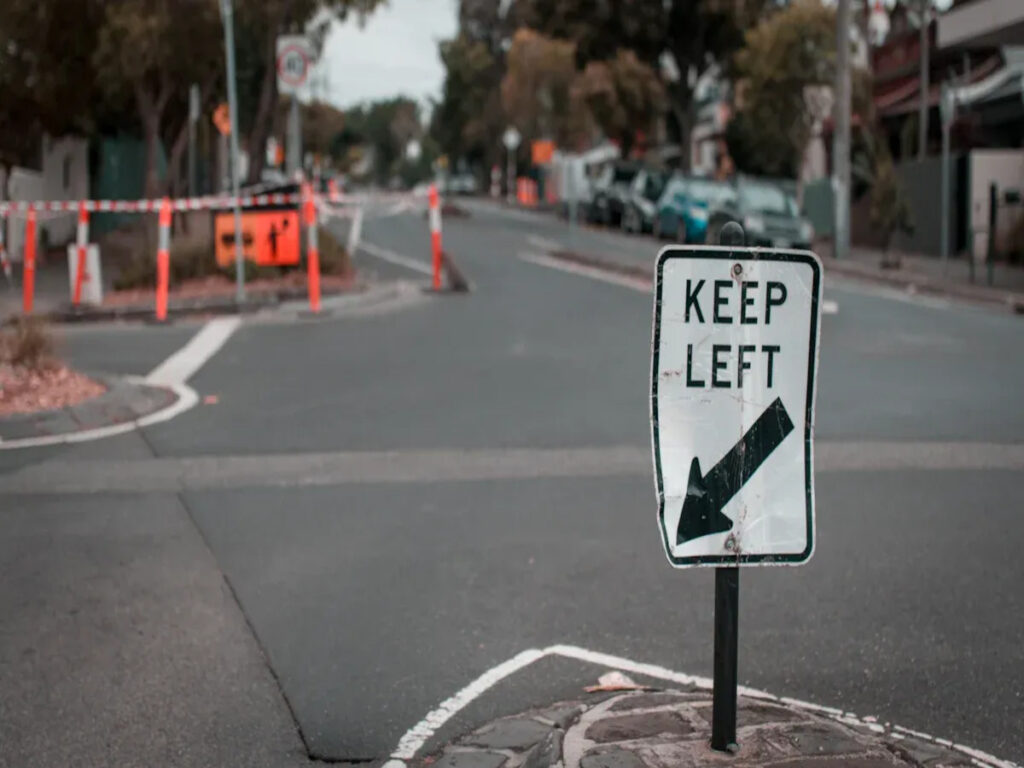
Sinais Urbanos
As estradas da cidade têm muitos sinais, edifícios, e árvores por perto. Designers escolhem placas menores para esses lugares movimentados. Pequenas placas ajudam a manter a área arrumada e cabe em espaços pequenos. Sinais da série A ou B são usados nas ruas da cidade. Esses sinais estão entre 600 mm e 900 mm de largura. Cores brilhantes e formas claras facilitam a visualização no trânsito. Às vezes, conselhos querem sinais maiores em cruzamentos movimentados para tornar as coisas mais seguras.
Dica: Verifique sempre as regras do conselho local antes de colocar novas placas nos centros das cidades.
Sinais Rurais
As estradas rurais são longas e têm menos coisas no caminho. Os carros andam mais rápido, então os motoristas precisam de mais tempo para ver os sinais. Sinais médios ou grandes, como Série C ou D, são os melhores aqui. Esses sinais são geralmente 900 mm para 1200 mm de largura. Sinais maiores se destacam em áreas abertas e podem ser vistos em neblina ou chuva. Placas com material refletivo são mais fáceis de ver à noite ou com mau tempo.
Sinais de rodovias
Rodovias e vias expressas precisam dos maiores e mais brilhantes sinais. Sinais da série D ou E, muitas vezes acabou 1200 mm de largura, ajudar motoristas em altas velocidades. Esses sinais usam letras grandes e brilham intensamente. Alguns sinais de orientação podem ser tão largos quanto 2400 milímetros. Grandes placas ajudam os motoristas a decidir o que fazer com antecedência. As rodovias também usam sinais de alerta e regulatórios extragrandes para atender às regras de segurança.
Observação: As rodovias precisam de sinalização que brilhe mais para manter os motoristas seguros à noite e em qualquer clima.
Tabela de tamanhos
A tabela abaixo mostra os tamanhos usuais de sinalização para cada tipo de estrada:
| Classe de estrada | Código da série | Tamanho típico (milímetros) | Sinais de exemplo |
|---|---|---|---|
| Urbano | A/B | 600–900 | PARAR, CEDER |
| Rural | CD | 900–1200 | Aviso, limite de velocidade |
| Autoestrada | D/E | 1200–2400+ | Guia, Direcional |
Escolher o tamanho certo da sinalização para cada local ajuda os motoristas a se manterem seguros e a seguirem as regras.
Reflexividade e tamanho
Classes reflexivas
Os sinais de trânsito australianos usam diferentes classes reflexivas para ajudar os motoristas a vê-los em todas as condições. O AS/NZS 1906 padrão lista essas classes. Sinais maiores, Como aqueles nas rodovias, preciso de melhores folhas refletivas. Classe 1W ou Classe 400 a cobertura é frequentemente usada para sinais das séries D e E. Esses tipos são muito brilhantes e ajudam os motoristas a ver sinais de longe. Em estradas lentas ou privadas, Aula 2 lençóis costumam ser suficientes. Este tipo funciona bem para pequenos sinais onde os carros se movem lentamente.
| Grau reflexivo | Austrália (AS/NZS 1906) | NÓS. (MUTCD) |
|---|---|---|
| Nível de entrada | Aula 2 | Grau do engenheiro |
| Nível médio | Aula 1 | Alta intensidade |
| Premium | Aula 3 | Grau de diamante |
Aula 3 Felas, também chamado de Grau Diamante, é o mais brilhante. É necessário para estradas movimentadas e grandes sinais onde a segurança é mais importante.
Requisitos de sinalização grande
Grandes sinais devem ser fáceis de ver de longe e com mau tempo. Os trabalhadores rodoviários usam os melhores materiais reflexivos para esses sinais. Classe 1W ou Classe 3 a cobertura mantém grandes placas brilhantes à noite e na chuva. Se uma grande placa usar lençóis de classe baixa, pode ser difícil de ver, especialmente em neblina ou brilho intenso. A classe reflexiva certa ajuda os motoristas a perceber os sinais com antecedência e a se manterem seguros.
Retorreflectividade
Retorreflectividade mostra quanta luz uma placa envia de volta aos motoristas. Isso é medido em candela por lux por metro quadrado (CD/LX/M²). Sinais com alta intensidade podem atingir cerca de 180 CD/LX/M². Os sinais de nível de entrada só podem alcançar 50 CD/LX/M². Os sinais de orientação suspensos às vezes precisam de até 250 CD/LX/M². Trabalhadores rodoviários verificam a retrorrefletividade com ferramentas especiais e verificações regulares. Essas verificações garantem que os sinais permaneçam brilhantes e seguros por toda a vida.
Emparelhamento de materiais
É importante escolher o material certo tanto para o sinal quanto para sua camada reflexiva. Grandes placas precisam de um apoio forte e das melhores coberturas para durar em condições climáticas adversas. Os trabalhadores rodoviários costumam usar painéis de alumínio com Classe 1W ou Classe 3 lonas para rodovias. Para estradas privadas ou lentas, materiais mais leves e Classe 2 lençóis geralmente são bons. A correspondência certa mantém os sinais fáceis de ler, forte, e seguindo as regras australianas.
Dica: Escolha sempre a classe reflexiva que se adapta ao tamanho do sinal e à velocidade da estrada. Isso mantém todos os usuários da estrada seguros e ajuda todos a verem os sinais.
Áreas Especiais e Sinais Personalizados
Zonas escolares
As zonas escolares precisam de sinalização especial e colocação cuidadosa. As regras australianas dizem que os sinais de alerta nas escolas devem ser verde-amarelos brilhantes. Esses sinais usam folhas refletivas Classe 1W para torná-los fáceis de ver, mesmo quando está escuro ou chovendo. Nesses lugares, os sinais costumam ser maiores, então os motoristas os percebem mais cedo. Estudos mostram que essas ideias funcionam bem. Por exemplo, Nos Estados Unidos, um estudo mudou os sinais amarelos normais de alerta escolar para verdes-amarelos brilhantes e tornou as faixas de pedestres mais fáceis de ver. Isso levou a 37% menos atropelamentos onde as mudanças foram feitas.
| Estudar (Ano) | Localização | Descrição da Intervenção | Medida de Resultado | Resultado |
|---|---|---|---|---|
| Feldman 2010 | EUA | Sinais de alerta escolares amarelo-esverdeados fluorescentes e faixas de pedestres de alta visibilidade | Mudança nos atropelamentos | 37% redução |
Observação: Sinais luminosos e grandes nas zonas escolares ajudam a manter as crianças seguras e fazem com que os condutores prestem mais atenção.
Estradas Privadas
As estradas privadas têm necessidades diferentes das estradas públicas. Os proprietários podem escolher placas menores, como Série A ou B, porque os carros andam mais devagar e há menos trânsito. Mas ainda é importante seguir as mesmas regras das vias públicas. Usar o tamanho certo e materiais refletivos torna as coisas mais seguras e ajuda os visitantes a saber o que fazer. Conselhos podem solicitar AS 1742 regras a serem usadas em terras privadas, especialmente se o público puder usar a estrada. Sinais claros evitam confusões e ajudam a prevenir acidentes.
Dica: Sempre verifique com o conselho local antes de colocar sinais em estradas privadas.
Sites Comerciais
Locais comerciais, como shopping centers e áreas de entrega, use sinais especiais para estacionamento, carregando, e direções. Esses sinais geralmente são Série B ou C, que são fáceis de ver, mas não muito grandes para o espaço. Folhas refletivas tornam a sinalização mais segura em estacionamentos e pontos de entrega. Os sinais personalizados ainda devem usar imagens nítidas e as mesmas cores dos sinais de trânsito público. Isso ajuda os motoristas a entender os sinais rapidamente, mesmo quando está ocupado.
Usar os mesmos estilos de sinalização em áreas comerciais ajuda a manter as pessoas seguras e segue a lei.
Conformidade com as regras estaduais e locais
Requisitos do Conselho
Os conselhos locais ajudam a decidir quais sinais de trânsito são necessários. Às vezes, eles querem sinais maiores do que as regras nacionais dizem. Isso é comum em locais movimentados ou arriscados. Os conselhos verificam e cuidam dos sinais para garantir que seguem AS 1742 e regras locais. Por exemplo, conselhos podem pedir sinais muito grandes de zona escolar. Eles também podem querer que os sinais sejam mais brilhantes em áreas escuras. Estas etapas ajudam a manter as estradas seguras e garantem que todas as regras de sinalização sejam seguidas. Os conselhos também analisam os novos planos de construção para ver se os tamanhos dos sinais se ajustam à área.
- Os conselhos podem pedir:
- Sinais maiores em cruzamentos movimentados
- Sinais mais brilhantes em ruas escuras ou sombreadas
- Verificações e reparos regulares
Anexos do MUTCD
Grupos rodoviários estaduais, como Transporte para NSW e VicRoads, use o Manual de Dispositivos Uniformes de Controle de Tráfego (MUTCD) e suas peças extras para ajudar a projetar sinais. Essas peças extras fornecem mais detalhes sobre o tamanho do sinal, onde colocá-los, e quão brilhantes eles deveriam ser. Por exemplo, NSW e Victoria têm suas próprias regras para sinais portáteis de mensagens variáveis. NSW se preocupa em manter espaços livres e não bloquear visualizações. Victoria tem regras sobre a altura dos sinais e a distância dos cruzamentos. Essas diferenças mostram que as regras estaduais podem mudar quais sinais são necessários e para onde eles vão.
Atualizações futuras
As estradas mudam com o passar do tempo. Conselhos e grupos rodoviários pensam em mudanças futuras ao escolher tamanhos de sinalização. Eles olham para coisas como mais carros, novos edifícios, ou alterações no limite de velocidade. Ao escolher sinais maiores ou mais fáceis de ver agora, eles não precisam substituí-los logo. Um estudo em Melbourne mostrou que seguir as regras de sinalização locais tornou as estradas mais seguras e ajudou o trânsito a circular melhor durante as melhorias..
Verificação de fornecimento
Ao comprar novos sinais, verifique sempre o código da série do sinal, como “R4-1C”. Este código mostra que o sinal tem o tamanho e brilho corretos. Os vendedores devem fornecer detalhes completos, como o tamanho em milímetros e quão brilhante é o sinal. Os conselhos locais podem querer uma prova de que a placa segue todas as regras antes de ser colocada. Isso garante que cada sinal seja seguro e fácil de ver, atendendo aos padrões nacionais e locais.
Identificando Sinais Padrão Australiano
COMO 1742 Códigos
Os sinais de trânsito australianos usam um sistema de código especial. Cada sinal recebe seu próprio código do AS 1742 padrão. Você pode encontrar esses códigos em catálogos de sinalização e em folhas de especificações. Por exemplo, R4-2 é o código para o sinal de restrição de velocidade. A Standards Australia coloca esses códigos em livros como AS 1742.4. As autoridades rodoviárias usam esses códigos para garantir que os sinais tenham o tamanho e a forma corretos. Isso mantém todos os sinais iguais e fáceis de detectar. Quando sinais antigos, como o sinal de desrestrição, são substituídos pelo novo ‘END’ sinais de limite de velocidade, mostra como as regras funcionam. Esses códigos também correspondem às regras de outros países, então eles trabalham tanto para a Austrália quanto para o exterior.
Gráficos de fornecedores
Os fornecedores ajudam fornecendo gráficos com tamanhos de sinalização e graus de refletividade. Esses gráficos mostram o tamanho em milímetros de cada sinal. Eles também informam qual grau de refletividade usar. Os compradores usam esses gráficos para escolher a placa certa para cada estrada. Os gráficos listam os pictogramas em cada placa. Isso garante que a sinalização siga o padrão australiano AS 1744 para tamanho de letra e símbolos claros. Bons fornecedores sempre colocam essas informações em seus catálogos.
Dica: Sempre obtenha a tabela de tamanho e refletividade do fornecedor antes de solicitar novos sinais.
Evitando tamanhos fora do padrão
Sinais que não seguem o padrão podem ser confusos e podem não ser legais. Os sinais de trânsito australianos não devem usar os EUA. ou tamanhos europeus, a menos que sejam para exportação. Usar o tamanho certo mantém os pictogramas e as palavras fáceis de ver. Seguir o padrão nacional mantém as estradas seguras e evita problemas com a lei.
Rotulagem de sinais
Toda sinalização que siga as regras deverá apresentar sua série de tamanhos e grau de refletividade. Geralmente é impresso ou gravado na parte de trás da placa. Etiquetas ajudam trabalhadores e inspetores a verificar se a sinalização está correta. Etiquetas claras também facilitam a troca de placas quando necessário. A rotulagem adequada ajuda a manter as estradas seguras e faz com que as pessoas confiem no sistema.
Tamanho e distância legível
Distância por tamanho
O tamanho de um sinal de trânsito afeta diretamente a distância que um motorista pode lê-lo. UM 600 O sinal mm é legível a partir de cerca de 60 metros. UM 900 O sinal mm aumenta esta distância para aproximadamente 100 metros. UM 1200 O sinal mm pode ser visto de até 150 metros. Essas distâncias ajudam os motoristas a reagir a tempo, especialmente em estradas rápidas. Os padrões na Austrália usam essas medidas para decidir o tamanho certo do sinal para cada tipo de estrada. O tamanho e a colocação dos sinais devem corresponder à velocidade e ao traçado da estrada para manter todos seguros.
| Tamanho do sinal (milímetros) | Distância legível aproximada (m) |
|---|---|
| 600 | 60 |
| 900 | 100 |
| 1200 | 150 |
Ângulo de aproximação
Os motoristas nem sempre veem as placas à frente. O ângulo de abordagem altera a forma como um sinal pode ser visto. Se uma placa estiver em um ângulo agudo em relação à estrada, os motoristas podem identificá-lo mais tarde. Sinais colocados no ângulo correto voltados para o tráfego em sentido contrário. Isso os torna mais fáceis de ler. Os projetistas de estradas usam o cone de visão para decidir o melhor ângulo. Sinais voltados diretamente para os motoristas melhoram a segurança e reduzem mensagens perdidas.
Efeitos Ambientais
As condições climáticas e da estrada podem alterar a distância que uma placa pode ser lida. Chuva, névoa, e poeira diminuem a visibilidade. A luz solar intensa ou o brilho intenso também podem dificultar a visualização dos sinais. À noite, materiais reflexivos ajudam os sinais a se destacarem. Sinais maiores e refletividade de alta qualidade trabalham juntos para manter os sinais visíveis em todas as condições. Verificações regulares garantem que os sinais permaneçam limpos e fáceis de ler.
Layout de comparação
Um gráfico visual ajuda a comparar tamanhos de sinalização e distâncias legíveis. A tabela acima mostra como sinais maiores aumentam a distância em que os motoristas podem lê-los. Os designers usam esses gráficos para escolher a sinalização certa para cada estrada. Um bom planejamento garante que todos os sinais estejam visíveis quando os motoristas mais precisam deles.
Dica: Sempre combine o tamanho do sinal com a velocidade da estrada e as condições locais para obter os melhores resultados de segurança.
Aderindo ao AS 1742 e as regras locais garantem que todos os sinais de trânsito sejam seguros e legais. Os gestores rodoviários precisam olhar para os padrões mais recentes, regras do conselho, e o que os fornecedores dizem antes de colocar cartazes. Verificando a série de sinais, refletividade, e a forma como os sinais são colocados ajuda a manter as estradas seguras.
Para mais informações, acesse o site da autoridade rodoviária do seu estado ou leia o AS mais recente 1742 documentos. Bons fornecedores também podem fornecer os gráficos mais recentes e conselhos úteis.
Perguntas frequentes
Qual é o tamanho mínimo para um sinal STOP na Austrália?
Um sinal de STOP numa cidade deve ter pelo menos 750 mm de largura. Em estradas rurais ou rápidas, deve ser pelo menos 900 mm de largura. O letreiro sempre mantém seu formato octógono.
Todos os sinais de trânsito precisam de material reflexivo?
Sim, a maioria dos sinais de trânsito na Austrália deve usar folhas refletivas. O tipo de refletividade depende do tamanho do sinal e de onde ele é colocado. Sinais de trânsito grandes ou rápidos geralmente usam Classe 1W ou Classe 400.
Os conselhos podem exigir sinais maiores do que o padrão nacional?
Câmaras podem pedir sinalização maior em alguns locais. Isso geralmente acontece em cruzamentos movimentados ou perto de escolas. Verifique sempre as regras do seu município antes de colocar novas placas.
Como alguém pode identificar se uma placa atende aos padrões australianos?
Verifique o AS 1742 etiqueta de série de código e tamanho na placa ou em seus papéis. Os fornecedores deverão fornecer uma tabela com o tamanho e grau de refletividade da sinalização.
Por que as rodovias usam placas muito maiores do que as ruas das cidades?
As rodovias têm carros mais rápidos e distâncias maiores para ver as placas. Sinais maiores ajudam os motoristas a ler e reagir a tempo. Isso torna as estradas mais seguras e evita mensagens perdidas.

